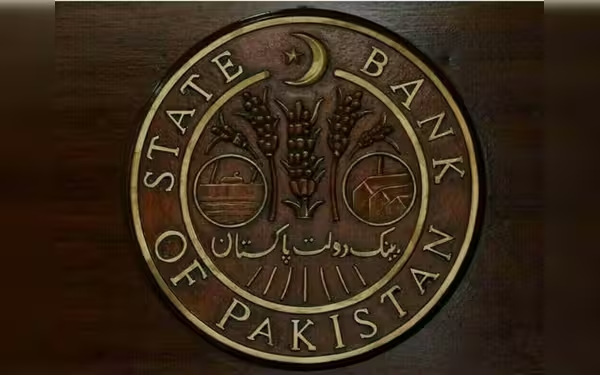Thursday, November 7, 2024 07:37 AM
SBP Cuts Key Policy Rate to 15% Amid Declining Inflation
- SBP reduces key interest rate by 250bps to 15%.
- Inflation approaches medium-term target range.
- Tax collection falls short of targets in FY25.
 Image Credits: brecorder
Image Credits: brecorderThe SBP has reduced the key policy rate to 15% in response to declining inflation, marking a significant monetary policy shift.
The State Bank of Pakistan (SBP) has made a significant move in its monetary policy by reducing the key interest rate by 250 basis points (bps), bringing it down from 17.5% to 15%. This decision, announced by the Monetary Policy Committee (MPC) on Monday, marks the fourth consecutive round of monetary easing that began in June 2024. The MPC stated, "At its meeting today, the MPC decided to cut the policy rate by 250bps to 15%, effective from November 5, 2024." This reduction is a response to the faster-than-expected decline in inflation, which has now approached the medium-term target range as of October.
The MPC emphasized that the tight monetary policy stance has been crucial in maintaining the downward trend in inflation. Factors contributing to this decline include a sharp drop in food inflation, favorable global oil prices, and the absence of anticipated adjustments in gas tariffs and petroleum development levy rates. The Committee noted, "Moreover, a sharp decline in food inflation, favourable global oil prices and absence of expected adjustments in gas tariffs and petroleum development levy rates have accelerated the pace of disinflation in recent months." However, the MPC also cautioned that inflation may remain volatile in the near term due to various inherent risks.
In its assessment, the MPC highlighted that the International Monetary Fund (IMF) program has alleviated uncertainty and improved the prospects for planned external inflows. The Committee observed, "Second, the surveys conducted in October showed an improvement in confidence and a reduction in inflation expectations of both consumers and businesses." Additionally, the yields on government securities and the Karachi Interbank Offered Rate (KIBOR) have seen substantial declines, indicating a shift in market sentiment.
Despite these positive developments, the MPC acknowledged that tax collection during the first four months of FY25 fell short of targets. The global oil market remains volatile, with prices fluctuating amid geopolitical tensions, while prices for metals and agricultural products have risen significantly. The MPC concluded that the current monetary policy stance is appropriate for achieving price stability within the 5-7% target range, which is essential for macroeconomic stability and sustainable economic growth.
On the inflation front, the MPC noted that improved domestic supply of key food commodities, along with benign global oil prices, has contributed to the recent disinflation. The Committee stated, "Continuation of these factors may bring inflation further down in the next few months." They now expect the average inflation for FY25 to be significantly lower than the previous forecast range of 11.5-13.5%. However, they also warned of multiple risks that could affect this outlook, including potential escalations in the Middle East conflict and adjustments in administered prices.
In terms of the external sector, the SBP anticipates that with the realization of planned official inflows, central bank-held reserves could rise to around $13 billion by June 2025. This follows a previous meeting where the MPC had made a notable cut in the key policy rate, reflecting a broader trend of easing monetary policy in response to slowing inflation and declining international oil prices.
As of October 2024, Pakistan's headline inflation stood at 7.2% year-on-year, slightly up from 6.9% in September. The current account also posted a surplus of $119 million in September 2024, marking the second consecutive month of surplus and the highest since March 2024. The SBP's foreign exchange reserves increased by $116 million, reaching $11.16 billion as of October 25, with total liquid reserves at $16.05 billion.
The SBP's decision to lower the key policy rate reflects a careful balancing act between fostering economic growth and managing inflation. As the country navigates these economic challenges, the focus remains on maintaining stability and ensuring that the benefits of these monetary policy adjustments are felt across the economy. The coming months will be crucial in determining whether these measures will lead to sustained economic recovery and improved living standards for the citizens of Pakistan.













